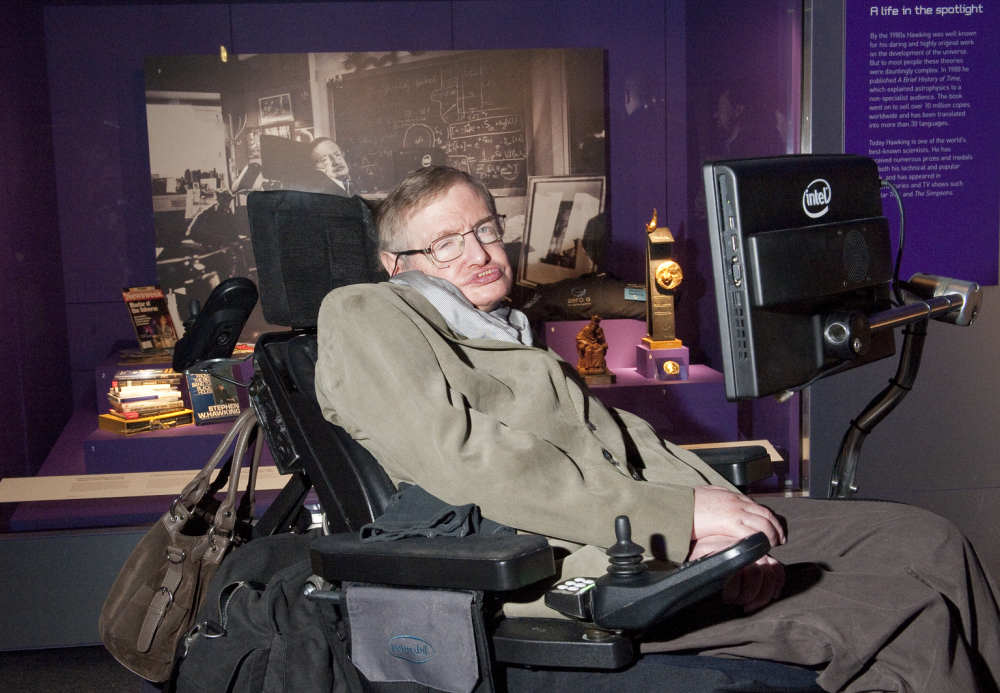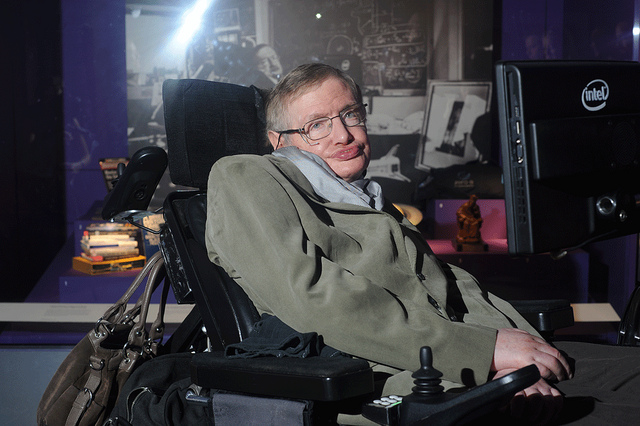By Alison Boyle and Roger Highfield
There was a huge buzz of excitement in the Museum on Saturday afternoon when a crowd of visitors sang ‘happy birthday’ to the world’s best known scientist, Professor Stephen Hawking.
There’s no better way to sum up the spirit of the Science Museum than this very public display of affection as the eminent cosmologist visited our new exhibit to celebrate his 70th birthday.

That he is now 70 is remarkable: it was in 1963, then a bright 21-year-old PhD student at Cambridge, that Hawking was told that he had a type of motor neurone disease (today we know it as an atypical form of amyotrophic lateral sclerosis) and was given about two years to live.
His visit to the museum on Saturday was in itself news: last month, illness had forced the Cambridge University physicist to miss our VIP reception in honour of the opening of the celebratory exhibit, and he had to pull out of a series of birthday celebrations in Cambridge.
We found out on Friday afternoon that he was well enough for a visit the next day, and organised lunch in the Museum’s Smith Centre.
There he was presented with a special gift from the Science Museum’s inventor in residence, Mark Champkins. Entitled “black hole light”, it consists of illuminated spirals of light to symbolise a black hole and ‘Hawking radiation’, a reference to his famous prediction that black holes will give off radiation. Prof Hawking typed ‘magic’ in response.
Finally, to the delight of crowds of onlookers, Prof Hawking asked to be taken on a tour of the museum, which he describes as ‘one of my favourite places’ and he remained here until 5pm.
His tour included the Apollo 10 capsule in Making the Modern World (Professor Hawking is a keen advocate of human spaceflight) and the Cosmos & Culture gallery where he admired the works of illustrious predecessors such as Copernicus, Galileo, Newton and Einstein. He also checked out our latest exhibits including the Fenix rescue capsule and Oramics to Electronica, and enjoyed seeing younger visitors in our hands-on Launch Pad gallery – we would like to think that there’s a future Stephen Hawking among them.
When Prof Hawking left, he told us: “The museum is much better than when I used to come in the 40s and 50s”.
The exhibit in his honour represents the first ever display of items from the Hawking archive and encourages visitors to reflect on the relationship between Hawking’s scientific achievements, particularly the work that established his reputation in the 1960s and ‘70s, and his immense success in popularising astrophysics. Hawking and his daughter Lucy have been involved in the selection of objects for display.
